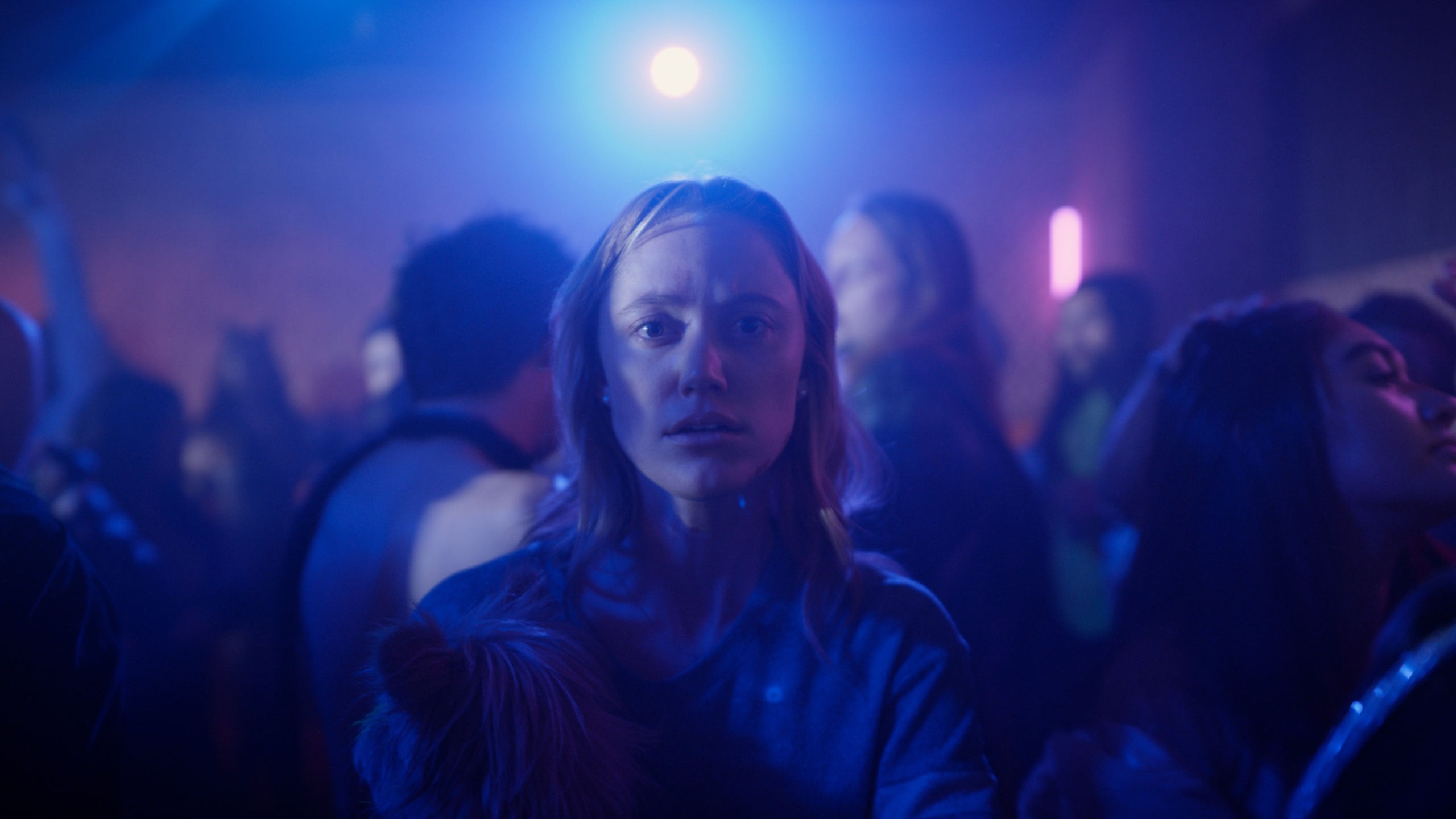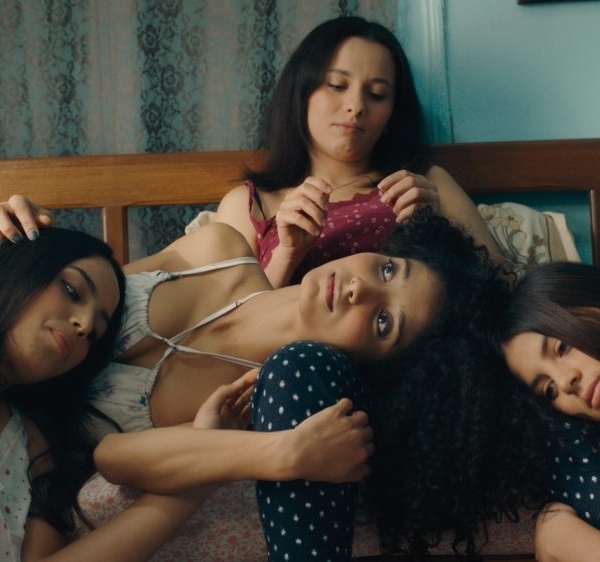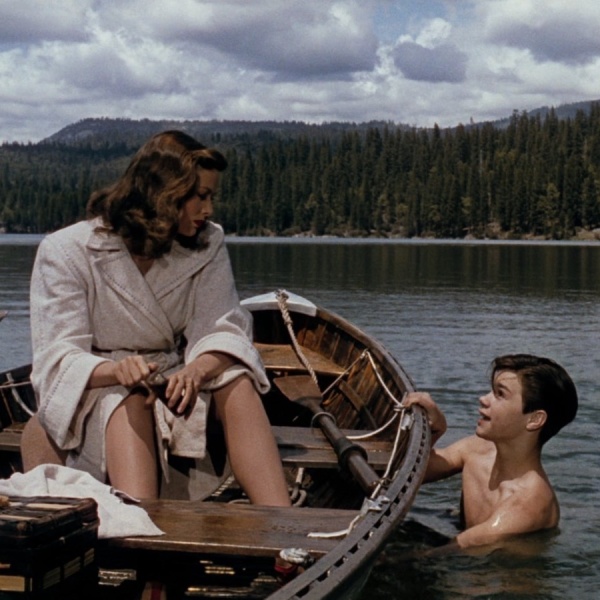Writer/director Veena Sud‘s Hulu movie “The Stranger” is a one-night thriller that allows for only a couple of scenes before rideshare driver Clare (Maika Monroe) realizes she’s made a horrible mistake picking up passenger Carl (Dane DeHaan). From that point, the movie is a nonstop adrenaline rush and so perfectly paced that the most surprising thing about it is that it didn’t begin as a feature film at all — this new Hulu movie is a re-edit of a series Sud initially made for Quibi.
Before its swift demise, Quibi was a platform designed for people to watch shows in 10-minute episodes (“quick bites,” hence the name) on their phones, with content presented in dual simultaneous aspect ratios so that one could watch the episodes either vertically or horizontally. The unique format provided filmmakers like Sud, Mark Pellington, and Catherine Hardwicke opportunities to experiment with new ways of storytelling; it also gave them a rare level of control and ownership over their work, as Quibi’s business model was based on returning all rights to the filmmakers after a two-year window, allowing them to do with their series as they wish.
Pellington was the first to re-edit his series “Survive” into a feature film, and now Sud has done the same with “The Stranger,” working with editor Philip Fowler to adjust the show’s rhythms for a new audience. For the original Quibi version, Sud’s primary challenge was creating episodes that were exciting enough to keep the audience returning but didn’t resort to forced climaxes that might become repetitive or exhausting. She arrived at a structure in which each 10-minute segment would roughly correspond to an hour of the heroine’s night-long adventure and found that avoiding repetition inspired numerous shifts in point of view.
“That took some work, because if there was more space between the opening moments and the ending moments of an episode, maybe people would forget the repetition,” Sud told IndieWire. “But 10 minutes necessitated not repeating, and that allowed me to think about false narrators or histories that we don’t know that somehow a secondary character finds out about our hero. I was actively looking for things like that because it was a different form.” Once the rights reverted back to Sud and she began reimagining the story as a feature, new formal concerns arose. “The conceit of a woman on the run from a crazy dude through the streets of L.A. is very linear, but we had to pull out shots and moments that felt too in your face.”
That mostly meant focusing on the transitions between episodes, which Fowler notes typically began and ended in heightened states of excitement. “When I was editing it for Quibi, it was all about creating climaxes at the end of each episode and really building the tension to get the viewer to tune back in for the next episode,” Fowler told IndieWire. “When we reapproached it for the feature version, it was about finding more nuance in the edit to help it flow. We didn’t need those climaxes every 10 minutes.” Even when editing the first version, Fowler found that Sud’s method of shooting made it easier for him to find a dramatic flow. “They shot a lot of the movie in order, so that was fun to cut because I felt like I was along for the ride with the characters.”

Sud felt that, in some ways, the initial construction of “The Stranger” helped when it translated to a more traditional format, especially when it came to the opening. “It was great to have to start really fast, with the inciting incident coming within the first three or four minutes,” Sud said, adding that the fast pacing was largely driven by the need to create something that worked in a vertical aspect ratio as well as a horizontal one. “Usually, my work is very quiet and composed, with the terror moving slowly, from left to right. The vertical frame necessitated a type of movement and propulsion that I don’t usually do.” Sud had two monitors on set, one vertical and one horizontal, to make sure that each shot worked no matter how the viewer was holding their phone, and Fowler finessed the frames in editing. “I essentially cut the horizontal, traditional film version first,” he said. “Then I went back through every edit and repositioned the frame so that it would work vertically on the phone.”
Although Sud credits Fowler with finding a more appropriate tempo for the feature version, even with the transitions smoothed out, the movie moves like a rocket, giving it a tone that is both of a piece with Sud’s previous work like “The Killing” (in its overall sense of danger and terror) and points toward new, more viscerally charged directions for her work. Sud, for one, is still excited by the potential of different forms like Quibi, even though the platform didn’t survive. “What Quibi gave me and the other creators — aside from a chunk of money and our rights — was the ability to play with this new language,” she said, noting that at one point, she had experimented with the idea of incorporating threatening ring tones into the action that would actually play on the viewers’ phones. “We talked at one point about dropping the episodes in real time over the course of 10 hours, so every hour, you would get a new episode and be alerted by Carl’s creepy ringtone.”
For Sud, the key is finding new ways of storytelling as the worlds of film and television as we know them change irrevocably. “Now that we’re in this moment of rethinking what comes next since prestige television seems to be in its death throes, how do we continue to tell really cool different stories in different ways? I’m hoping that new ideas will come, new ways of looking at a screen, new ways of thinking. I know gaming is such a big thing now, but other than that, how else can we tell stories that play with the form?”
“The Stranger” premieres on Hulu on April 15.





